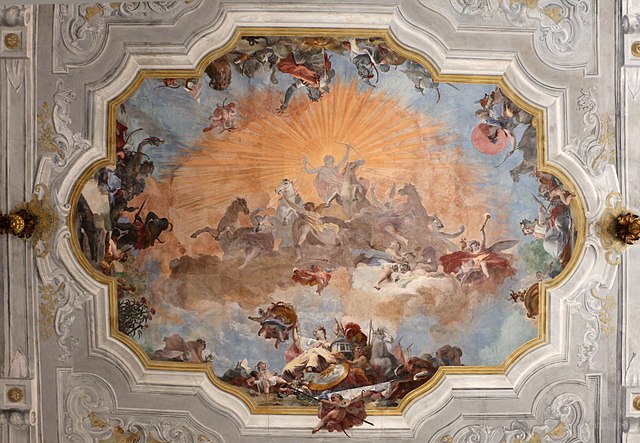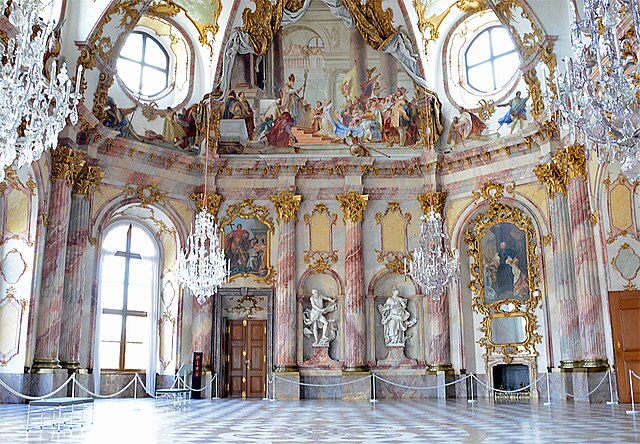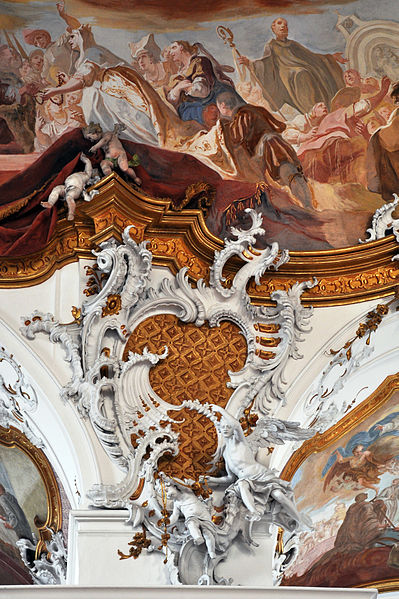François Boucher was a French painter, draughtsman and etcher, who worked in the Rococo style. Boucher is known for his idyllic and voluptuous paintings on classical themes, decorative allegories, and pastoral scenes. He was perhaps the most celebrated painter and decorative artist of the 18th century.
Portrait of François Boucher by Gustaf Lundberg (1741)
Portrait of Marie-Jeanne Buzeau, wife of Boucher by Alexander Roslin
The Blonde Odalisque or Resting Girl, (thought to be Marie-Louise O'Murphy) c. 1752
The Secret Message
Rococo, less commonly Roccoco, also known as Late Baroque, is an exceptionally ornamental and dramatic style of architecture, art and decoration which combines asymmetry, scrolling curves, gilding, white and pastel colours, sculpted moulding, and trompe-l'œil frescoes to create surprise and the illusion of motion and drama. It is often described as the final expression of the Baroque movement.
Image: Ca' rezzonico, salone da ballo, quadrature di pietro visconti e affreschi di g.b. crosato (caduta di febo e 4 continenti), 1753, 02
Image: Charles Cressent, Chest of drawers, c. 1730 at Waddesdon Manor
Image: Kaisersaal Würzburg
Integrated rococo carving, stucco and fresco at Zwiefalten Abbey (1739 – 1745)








